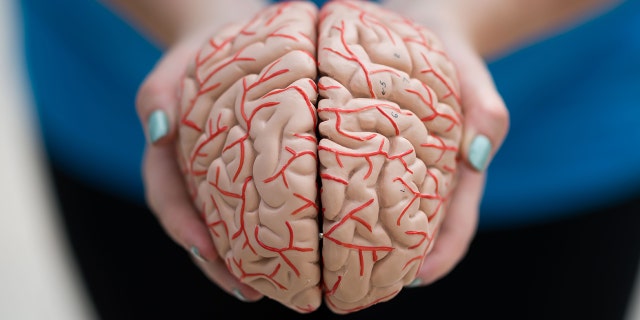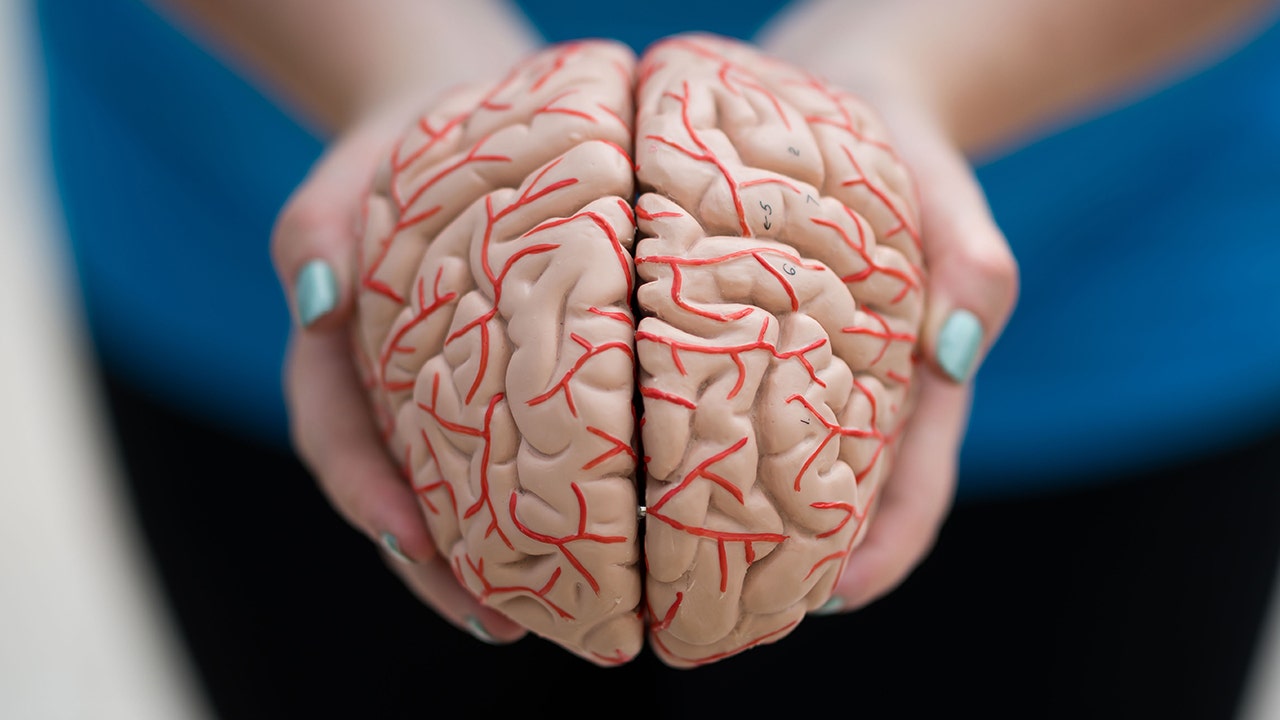What is Parkinson’s disease? Symptoms, causes, ways to cope with diagnosis
Some 90,000 people in the United States are diagnosed with Parkinson’s disease every year.
The disease is typically seen in older individuals around the age of 60. In most cases, Parkinson’s disease is not fatal, although those who are living with it may have to change some aspects of their daily routines.
Parkinson’s disease affects the brain, mainly within the substantia nigra. This section of the brain produces dopamine, which sends signals that control muscle movements.
RICHARD LEWIS DIAGNOSED WITH LATE-ONSET PARKINSON’S DISEASE: ‘LUCKILY, I GOT IT LATE IN LIFE
With natural aging, cells in the substantia nigra die slowly, but for people with Parkinson’s, this happens quickly, causing less dopamine production. This then lowers the control an individual has over their movements.
Here is more information about the disease, including symptoms, causes, and ways to cope.

Parkinson’s disease severely affects the brain, impacting muscle control. (Matthew Horwood/Getty Images/File)
- What is the cause of Parkinson’s disease?
- What are the symptoms of Parkinson’s disease?
- How is Parkinson’s disease treated?
- What is the life expectancy of someone with Parkinson’s disease?
- How do people cope with Parkinson’s disease?
1. What is the cause of Parkinson’s disease?
There is no one known cause of Parkinson’s disease, but there are factors that could increase risk. For most cases of the disease, the cause is unknown.
A person who is diagnosed without cause has what is called idiopathic Parkinson’s disease.
The biggest risk factor for Parkinson’s disease is age, as it is more often seen in older people. Gender also plays a role because males are more likely to get Parkinson’s than females.
MICHAEL J. FOX SPECULATES WHETHER HIS PARTYING COULD HAVE LED TO PARKINSON’S DISEASE
Repeated head trauma can increase a person’s risk, as can environmental factors like exposure to pesticides and herbicides used for farming.

Those with Parkinson’s disease may need extra support, such as handrails when moving about their homes or other locations. (iStock)
2. What are the symptoms of Parkinson’s disease?
One of the most common symptoms of Parkinson’s disease is experiencing tremors or rhythmic shaking. This often occurs in the hands.
Other symptoms of the disease are slowed movement, impaired posture and balance, changes in writing, and stiffness of muscles.
3. How is Parkinson’s disease treated?
Unfortunately, there is no cure for Parkinson’s disease, but there are ways to help alleviate symptoms.
Everyone’s treatment is going to look different based on what works best for that particular person.
PROFESSIONAL SHOOTER USES ‘GUN THERAPY’ TO LESSEN SYMPTOMS OF PARKINSON’S DISEASE
Treatment options include support groups, physical and speech therapy, and lifestyle changes.
Certain medications help with the symptoms of the disease.

To help cope with Parkinson’s disease, spend time with loved ones and accept help when needed. (iStock)
Dopaminergic medications are used to treat Parkinson’s. These types of drugs help replenish the dopamine the patient lacks. Levodopa and Carbidopa medications are some examples.
CLICK HERE TO SIGN UP FOR OUR LIFESTYLE NEWSLETTER
Dopamine agonists are medications that imitate the effect that dopamine has on the brain. Examples of these are Pramipexole, Ropinirole, and Bromocriptine. There are also MAO-inhibitors like Selegiline and Rasagiline in addition to COMT-inhibitors like Entacapone and Tolcapone.
These can also help to combat the symptoms associated with Parkinson’s disease.
4. What is the life expectancy of someone with Parkinson’s disease?
For the vast majority of Parkinson’s disease cases, a person’s life expectancy isn’t directly affected by the disease. It is typically not fatal, and a person diagnosed will have a normal or near-normal life expectancy.
This is the case for those with idiopathic Parkinson’s disease.
Those with atypical parkinsonism have a more increased disease progression and shorter life expectancy because people with this type of disease have some symptoms of Parkinson’s but also additional symptoms that are not associated with the disease.
Examples of such diseases are dementia with Lewy bodies and progressive supranuclear palsy. The life expectancy of a person with atypical parkinsonism is around seven years after diagnosis, according to the Australian Journal of General Practice.

People with Parkinson’s disease should try to remain active by doing things they enjoy. (Chandan Khanna/AFP via Getty Images)
5. How do people cope with Parkinson’s disease?
Even though those diagnosed with Parkinson’s disease may need to make certain changes to their day-to-day life, and tasks may be more difficult than they used to be, the disease is one with which you can live.
Keep in mind that with Parkinson’s disease, it may take more time to perform daily tasks, so certain household responsibilities may need to be readjusted.
CLICK HERE TO GET THE FOX NEWS APP
It also can be helpful for Parkinson’s disease patients to be well-informed about the disease and how it can affect them.
Overall, when living with Parkinson’s disease, it is important to spend time with loved ones, share feelings you have about the disease and not be afraid to accept help when it is needed.
Furthermore, those with Parkinson’s should try to remain active, set realistic goals, and keep routines in place.


